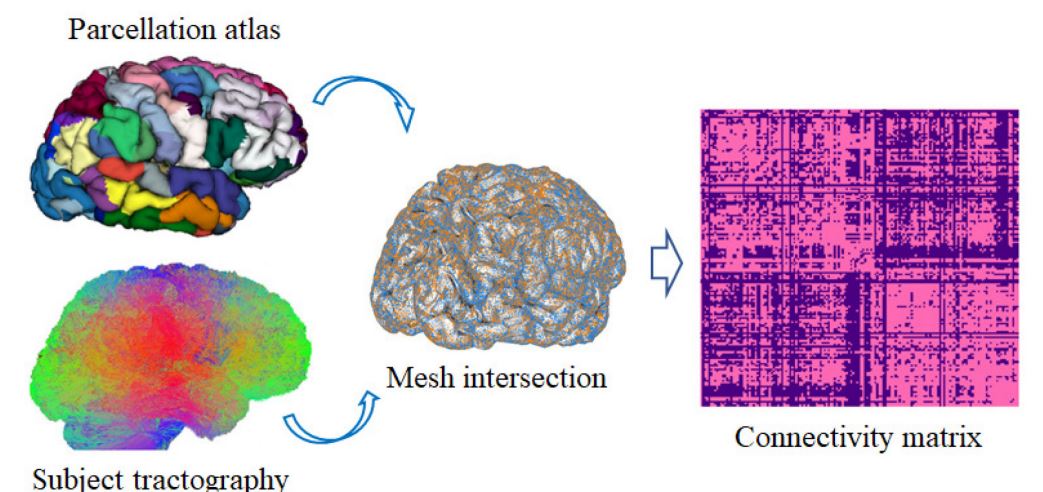Cortical Surface Parcellation
From coarse to fine-grained parcellation of the cortical surface using a fiber-bundle atlas

We present a hybrid method to create fine-grained parcellations of the cortical surface, from a coarse-grained parcellation according to an anatomical atlas, based on cortico-cortical connectivity. The connectivity information is obtained from segmented superficial and deep white matter bundles, according to bundle atlases, instead of the whole tractography. Thus, a direct matching between the fiber bundles and the cortical regions is obtained, avoiding the problem of finding the correspondence of the cortical parcels among subjects. Generating parcels from segmented fiber bundles can provide a good representation of the human brain connectome since they are based on bundle atlases that contain the most reproducible short and long connections found on a population of subjects. The method first processes the tractography of each subject and extracts the bundles of the atlas, based on a segmentation algorithm. Next, the intersection between the fiber bundles and the cortical mesh is calculated, to define the initial and final intersection points of each fiber. A fiber filtering is then applied to eliminate misclassified fibers, based on the anatomical definition of each bundle and the labels of Desikan-Killiany anatomical parcellation. A parcellation algorithm is then performed to create a subdivision of the anatomical regions of the cortex, which is reproducible across subjects. This step resolves the overlapping of the fiber bundle extremities over the cortical mesh within each anatomical region. For the analysis, the density of the connections and the degree of overlapping, is considered and represented with a graph. >
This work is published in: Frontiers in Neuroinformatics
Github code: https://github.com/andvazva/Parcellation